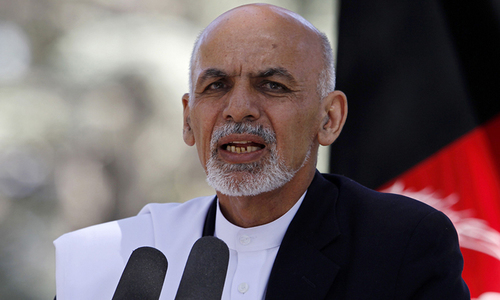WASHINGTON: US Defence Secretary James Mattis has delivered to the White House a new plan for combating the militant Islamic State group (IS), which calls for using both military and non-military means for defeating the extremist organisation.
As Pentagon officials said that the plan went beyond Iraq and Syria, the commander of the US forces in Afghanistan warned that the IS had a significant presence in the Pak-Afghan region as well.
The United States media reported that the new plan was an updated version of the Obama administration’s strategy of relying on local forces to fight the militants and called for using more US troops than allowed by the previous rulers. The plan also suggests various options for tightening the screws on the terrorist group’s funding.
As the Trump administration expanded its plans for defeating terrorists, Gen John Nicholson, Commander of US and Nato forces in Afghanistan, told a military publication that “alliances of convenience” among terrorist networks in Afghanistan and Pakistan was a big concern for the United States.
Also read: TTP provides core fighting group for IS: US general
Talking to a publication of the Combating Terrorism Centre, an academic institution at the US Military Academy in West Point, Gen Nicholson outlined how Al Qaeda, the IS and other militant groups worked together in the Pak-Afghan region.
“Al Qaeda is linked to the Taliban, who are not a designated terrorist organisation but a violent extremist organisation, and the Taliban provide a medium for designated terrorist organisations like the Haqqani network, Lashkar-e-Taiba and AQIS. These five form a loose sort of confederation that complement one another and work together,” he said.
The general pointed out that the IS, the Islamic Movement of Uzbekistan and the banned Tehreek-i-Taliban Pakistan had also formed a loose configuration. “So, we see these alliances of convenience or where they have complementary goals come together. This is one of our big concerns,” he said.
At the Pentagon, officials told various media outlets that these ground realities were part of the comprehensive plan they had submitted to the White House.
“It is a broad plan that’s global in scope and not just military, [and] it is not just Iraq and Syria.” An official told CNBC.
Pentagon spokesman Navy Capt Jeff Davis told a news briefing that this was “a plan to rapidly defeat ISIS,” but he stressed that this was a preliminary plan whose details would not be released to allow for continued discussion and to avoid giving the enemy forewarning.
The plan called for the involvement of “all elements of national power” in a “trans-regional approach”, he added.
“Diplomacy is a key part of the plan” that was focused on the IS but was also shaped to include other “trans-regional” terrorist groups, the spokesman said. “This is really a framework for broader discussion.”
During the 2016 election campaign, President Donald Trump had pledged that if elected he would order a 30-day review on accelerated action to eliminate the IS as a threat.
On Jan 27, President Trump went to the Pentagon to sign an executive order asking Mr Mattis to draw up the plan within 30 days.
At the White House, Mr Mattis outlined the plan to the ‘Principals Committee’ of the National Security Council, led by the new National Security Adviser, Lt Gen H.R. McMaster. The committee includes White House chief strategist Steve Bannon and other senior Trump advisers.
Lt Gen McMaster also received a preliminary briefing on the plan on Friday.
Although the Obama administration was strongly against inducting more troops into battles against the IS, President Trump’s officials have indicated that the new plan would involve US soldiers moving closer to the front lines while still avoiding ground combat.
President Trump wants to set up “safe zones” for refugees in Syria, which would require large numbers of US troops to police and protect them, but it was not clear if the Mattis plan included those.
However, Army Gen Joseph Votel, commander of the US Central Command, told reporters last week that the United States might provide artillery support to the US-backed Syrian Democratic Forces now closing on the IS stronghold of Raqqa.
And US Joint Chiefs Chairman Gen Joseph Dunford said earlier this week that the United States could continue to stay in Iraq after eliminating the last IS stronghold in Mosul.
“We have, as has Nato, begun a dialogue about a long-term commitment to grow the capacity, maintain the capacity of Iraqi security forces, but no decisions have been made yet.”
Published in Dawn, March 1st, 2017













































